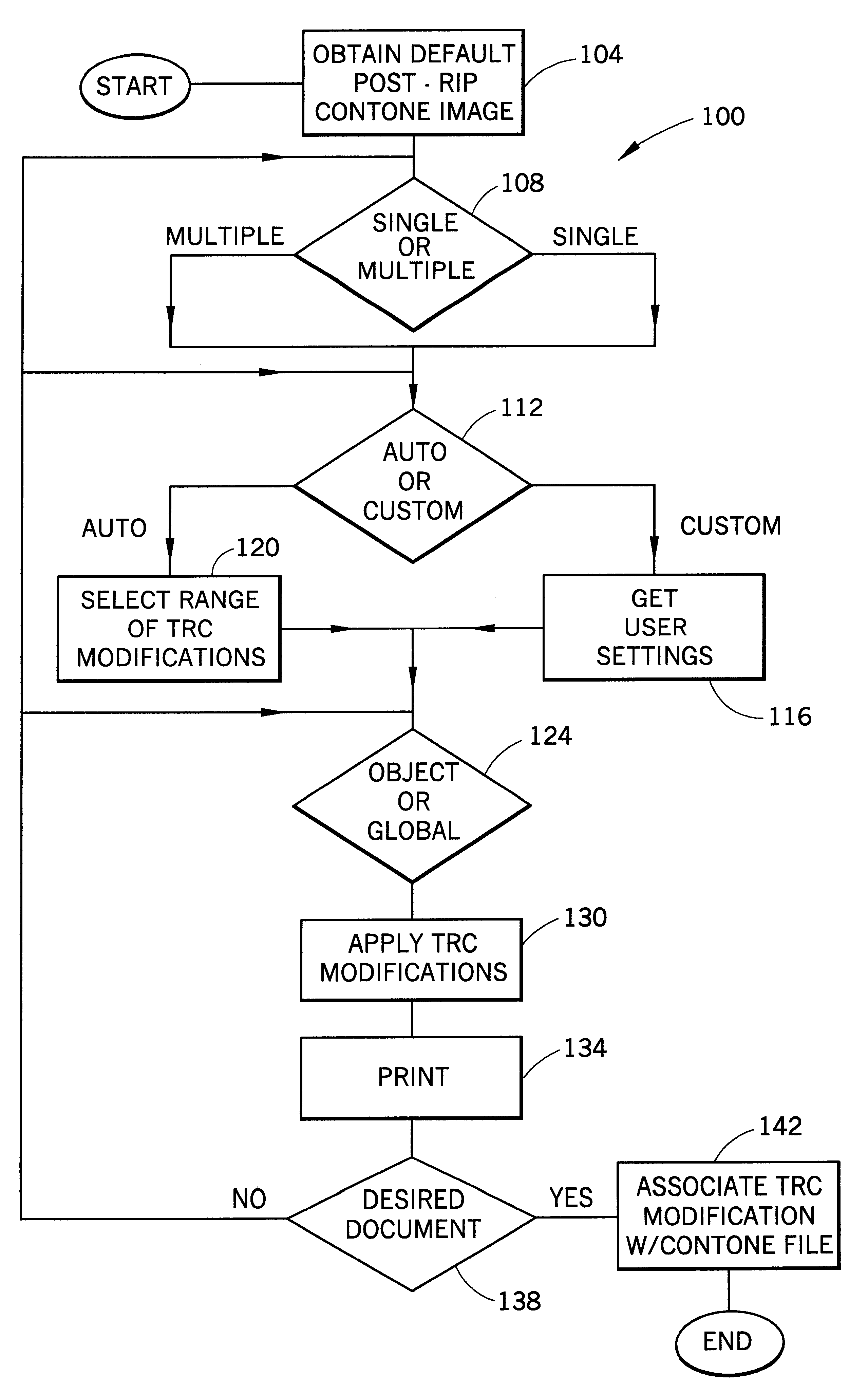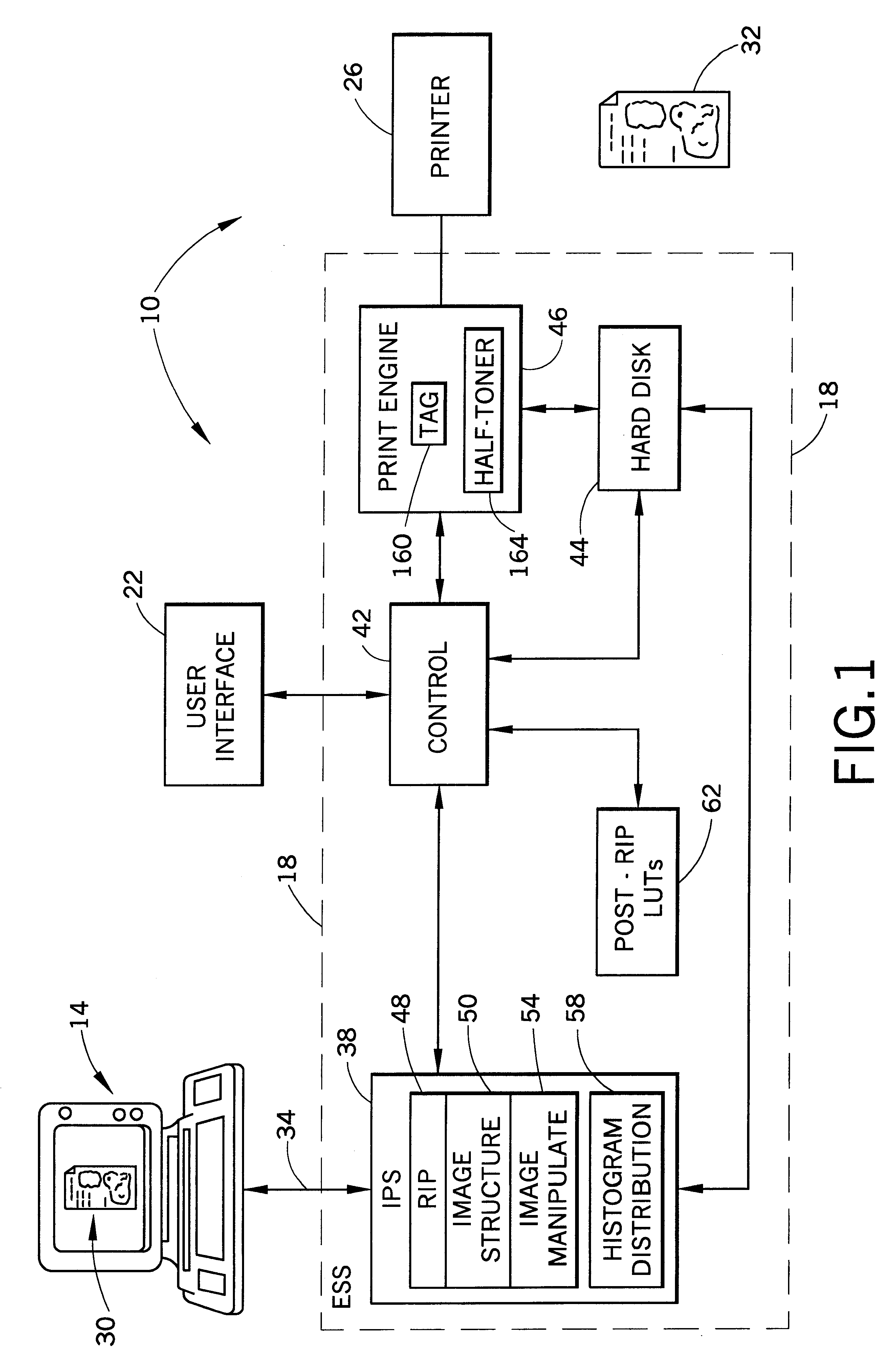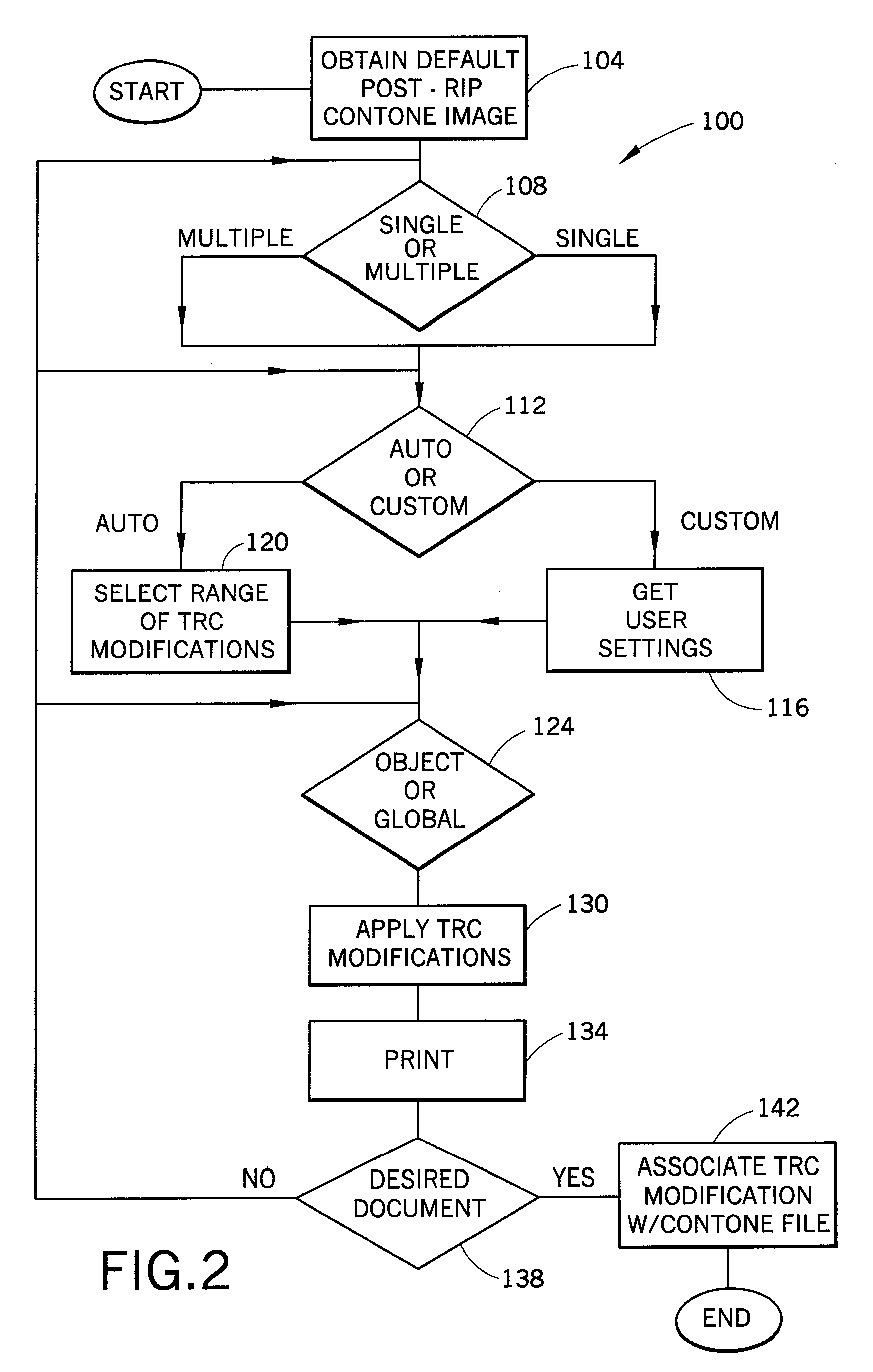Post raster-image processing controls for digital color image printing
- Summary
- Abstract
- Description
- Claims
- Application Information
AI Technical Summary
Benefits of technology
Problems solved by technology
Method used
Image
Examples
Embodiment Construction
With reference to FIG. 1, an exemplary system for carrying out the present invention is a digital color image printing system 10. The printing system includes a remote computer 14, a control system, which is known as an electronic subsystem (ESS) 18, a user interface (UI) 22, and a printer 26. The ESS is a programmable microprocessor system, as exemplified by U.S. Pat. No. 4,485,156 and its references which are hereby incorporated by reference. An operator creates a digital document 30 on the computer (or input station). The ESS processes and adjusts the image characteristics of the document, and the printer prints out a representation of the adjusted document 32.
More particularly, an operator, such as a graphics artist, runs a composition program on the computer to create the digital document which contains objects such as color images, graphics and / or text. The operator may use scanned images, computer programs, or other generation means to create the digital document. Typically, ...
PUM
 Login to View More
Login to View More Abstract
Description
Claims
Application Information
 Login to View More
Login to View More - R&D
- Intellectual Property
- Life Sciences
- Materials
- Tech Scout
- Unparalleled Data Quality
- Higher Quality Content
- 60% Fewer Hallucinations
Browse by: Latest US Patents, China's latest patents, Technical Efficacy Thesaurus, Application Domain, Technology Topic, Popular Technical Reports.
© 2025 PatSnap. All rights reserved.Legal|Privacy policy|Modern Slavery Act Transparency Statement|Sitemap|About US| Contact US: help@patsnap.com



